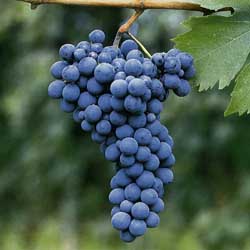Tasting At The Times.
 Lately the phone calls at the store have been bringing a fair amount of good news. Perhaps one of the best came a few weeks ago from Eric Asimov, the chief wine critic of the New York Times, bearing an invitation to be part of his panel to taste some Montepulciano d'Abruzzo.
Lately the phone calls at the store have been bringing a fair amount of good news. Perhaps one of the best came a few weeks ago from Eric Asimov, the chief wine critic of the New York Times, bearing an invitation to be part of his panel to taste some Montepulciano d'Abruzzo.
This was my second time on a tasting panel at The Times, and needless to say, I consider that a great honor. I would once again go into Renzo Piano's creation to sit among the best palates in the world, at the headquarters of one of the nation's most read newspapers. I got there a bit early, and I was welcomed by Eric, who took me to his desk and started to talk about Camillieri, the author of "Il Commissario Montalbano," a series of books based on the stories of a Sicilian police inspector in a small town called Vigata. I'm a big fan of Camilleri's work, so much so that I've read all of the Montalbano books and I think he is simply a brilliant writer - probably the best we've had in Italy in the past century. The next topic was, of course, wine. We exchanged some opinions on 2006 Burgundies, and the scoop is that we both agreed on the notion that 2005 was not significantly better than 2006, though the prices are suggesting otherwise. Then, it was time to get upstairs to the tasting room, where the table was already covered with glasses filled with Montepulciano d'Abruzzo. Eric, of course, did a great job on describing the tasting and the results, and you can also hear my opinions on the tasting. (click here to read the article) For this post, however, I will just focus on some thoughts about this fairly simple grape.
Like most of the Italian red grapes, Montepulciano's origins date back to the Greeks. But only since the 17th century has it been known as Montepulciano - the name has been contended between the Toscani and the Abruzzesi since then. The confusion started because of the many similarities, both organic and morphological qualities of the wines produced in Montepulciano (Tuscany) and the ones produced in Abruzzo. It was later discovered that the grape Montepulciano Primutico, grown in south of Tuscany, was in fact Prugnolo Gentile, a clone of the Sangiovese not related to the Montepulciano grapes. Going back several centuries, we find that the wine produced in Aptruzi (old name of the Abruzzi region) fed the Cartago Commander of Hannibal's army, and animals during the long-lasting Roman siege. The grape itself is quite simply, monochromatic. Montepulciano translates itself in cherry flavors - most other layers in the wine come from the terroir and/or the vinification methods. It is commonly used in "Purezza" (100%), or in blends. It is also a fairly adaptable vine, planted in most of the Italian regions. The wines are often very inexpensive and mass produced; wineries like D'Angelo and Zonin are a clear example, but Montepulciano also reaches the inner sanctum of the best Italian wines, especially when we are talking about Pepe and Valentini, the two iconic producers of the region. For some, Montepulciano d'Abruzzo could become the king grape of Italy dethroning the Sangiovese. In my opinion, we are still pretty far from that happening - but if go back with my memory to when I opened an Emidio Pepe 1980 a couple of years ago, I can see the reason why some winemakers think that way.
I would like to thank Eric Asimov for inviting me, Bernard Kirsch for choosing the wines for us and Florence Fabricant for being a great host at the panel tasting.









No comments:
Post a Comment